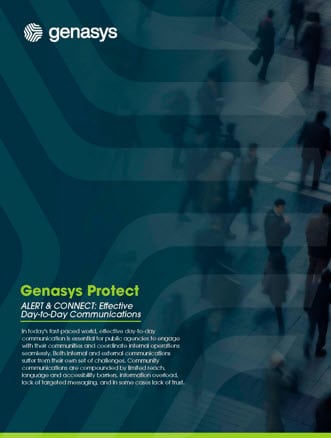In recent years, school security has taken center stage in discussions surrounding education. Ensuring the safety of students, teachers, and staff within educational institutions has become a top priority. While schools are meant to be safe havens for learning and personal growth, the unfortunate reality is that they can also be vulnerable to various security threats. From intruders and violence to technological breaches, schools must adopt a comprehensive approach to security that goes beyond physical measures by embracing technology. This article explores the multifaceted aspects of school security and proposes a holistic approach to creating a safer learning environment.
Physical Security Measures
Access Control Systems: One of the fundamental aspects of school security is controlling who enters the premises. Access control systems, such as ID card scanners and electronic door locks, limit unauthorized access and ensure that only authorized individuals can enter the building.
Surveillance and Monitoring: Implementing a network of security cameras can help deter potential threats and provide valuable evidence in the event of incidents. Real-time monitoring allows administrators to respond quickly to any unusual activity.
Perimeter Security: A secure perimeter is essential to prevent unauthorized access to the school grounds. Fencing, gates, and controlled entry points contribute to maintaining a safe environment.
Emergency Response Protocols: Schools should establish clear emergency response protocols for various scenarios, including natural disasters, lockdowns, and medical emergencies. Regular drills and training sessions ensure that all stakeholders know how to react in crisis situations.
Personnel and Training
Security Personnel: Hiring trained security personnel can significantly enhance the safety of a school. These professionals are equipped to handle security threats and can work in tandem with staff to implement security measures effectively, especially if your local law enforcement does not have an established School Resource Officer (SRO) program available.
Staff Training: Teachers and staff should undergo regular training sessions to recognize potential threats and respond appropriately. Training could include identifying signs of distress in students, implementing lockdown procedures, and providing basic medical assistance.
Mental Health and Support
Counseling Services: Fostering a safe environment involves addressing the mental and emotional well-being of students. Schools should provide access to counseling services to help students cope with stress, anxiety, and other challenges they might face.
Bullying Prevention Programs: Bullying can contribute to an unsafe atmosphere. Implementing anti-bullying initiatives and creating an environment where students feel comfortable reporting incidents can help maintain a positive and secure school climate.
Community Involvement
Parental Engagement: Involving parents in the security conversation is crucial. Schools can organize workshops, meetings, and seminars to educate parents about security measures and the importance of their involvement.
Technological Measures
Cybersecurity: In the digital age, schools must also safeguard their digital infrastructure. Robust cybersecurity measures protect sensitive student and staff data from hacking attempts, ensuring the privacy and security of all stakeholders.
Communication Systems: An efficient communication system is vital for disseminating critical information in emergency situations. Schools should utilize various channels, such as text messages, emails, and PA systems, to quickly reach students, parents, and staff. Most importantly, this information needs to be controlled to prevent further chaos, which may result in additional harm. Having a live communications platform that is mobile for your staff is critical to the success of your response to these events.
Collaboration with Law Enforcement: Establishing a working relationship with local law enforcement agencies can facilitate quick responses to emergencies. Law enforcement can offer insights and support in developing effective security strategies. Genasys Protect CONNECT (formerly Evertel) is a mobile application easily used to facilitate this collaboration by maintaining a direct line of live communication with your first responders.
Emergency Alerts and Notifications: A communication platform like CONNECT could facilitate instant and widespread notifications to school staff, students, and parents in case of emergencies or critical incidents. This could include alerts about lockdowns, natural disasters, health emergencies, etc.
Real-time Communication: CONNECT offers real-time communication features that allow school staff to coordinate and communicate effectively during emergencies. This could be particularly useful for administrators, security personnel, and your local law enforcement agencies. Establishing a School Crisis Response Team amongst your faculty is a critical component of a crisis event.
Two-Way Communication: Having a platform that allows for two-way communication could enable staff to report suspicious activities or safety concerns. This can help create a more proactive safety culture and be critical during a time of crisis.
Resource Sharing: CONNECT could provide a space for sharing important safety resources, guidelines, and protocols. This can ensure that everyone is on the same page and knows what to do in various scenarios, no matter where the day brings them.
Crisis Management Planning: CONNECT might have features that assist schools in creating and updating crisis management plans. These plans can be crucial in responding effectively to various safety challenges.
It’s Not Too Late To Act
Ensuring school security requires a multifaceted approach that combines physical measures, personnel training, technology integration, mental health support, and community involvement. By implementing comprehensive security strategies, educational institutions can create an environment where students can learn and thrive without the constant fear of safety threats. As we continue to evolve in an ever-changing world, the safety of our schools must remain a top priority for the holistic development of our future generations.















